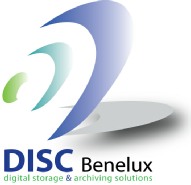

4823 LJ Breda
Nederland
Tel 076-5414360
PoINT Archiver
info@disc-nederland.nl
Qstar Network Migrator
Snel naar >

Copyright 2005 -
Migratie Tiered Storage & Archiving model
Tiered File Archiving
Unstructured data is almost doubling every year and this high growth rate is challenging organizations dealing with flat budgets. One of the more effective approaches to dealing with the ever growing data demons is deploy tiered file archiving.
Archiving is an intelligent process of moving of static files from a primary performance storage tier to an archive tier for the purpose of retaining the files over a. long period of time. In order to be efficient and cost effective the process of archiving and recalling archived files needs to be transparent to applications and users.
Archiving is an integral part of an effective ILM (ILM > information Lifecycle management) strategy and it allows customers to achieve operational and fiscal efficiencies while meeting their retention requirements. Archiving achieves cost efficiencies by reducing the amount of data on the more expensive primary tier of storage by using policies to transparently shiftthe older static files to a lower cost storage tier. This has the effect of pushing out or delaying additional capital needs for primary storage and backup storage. More info?
An Overview of Tiered Storage
A tiered storage solution is based on pools of storage whereby files are stored and accessed. These could be DAS (direct attached storage), NAS (Network Attached Storage) or SAN (Storage Area Network) running iSCSI or Fibre Channel. Typically a company would have a tier 1 storage platform and this would be the storage with the fastest access to the data, thereafter a company might have a large pool of SATA disk and tape library. The tier 1 storage would also be the most expensive to purchase and maintain, it is this storage that typically requires the biggest budget in order to store larger volumes of data.
Data growth
Many organisations today are struggling with the shear volumes of data being created and the issues of how to organise and store this data without the need to constantly backup, copy, move and purchase new storage. The fundamental issue has been to keep all data current and legacy on spinning disks and then back this up, but the problem historically is how to figure out what to keep on tier 1 disk and the issues involved in moving those files to other storage including SATA RAID, tape and optical. A fact that has been known for many years is that up to 80% of your organisation’s data has not been accessed in the last 90 days and at least 60% of it will not be required in the future.
HSM
The traditional way of archiving data was called HSM (hierarchical storage manager), this evolved from the mainframe whereby all data in a given area was archived. During the 90’s HSM was really the only way of archiving information to a drive letter or device.
The primary problem with HSM is as follows:
1.Data has to be pointed to a physical location.
2.No migration or policy rules can be applied to the data.
3.It is primarily a manual task.
4.Restores from archive are slow.
5.Users are not aware and cannot recover archived data. These operations must be carried out by system administrators. LEES VERDER READ MORE


